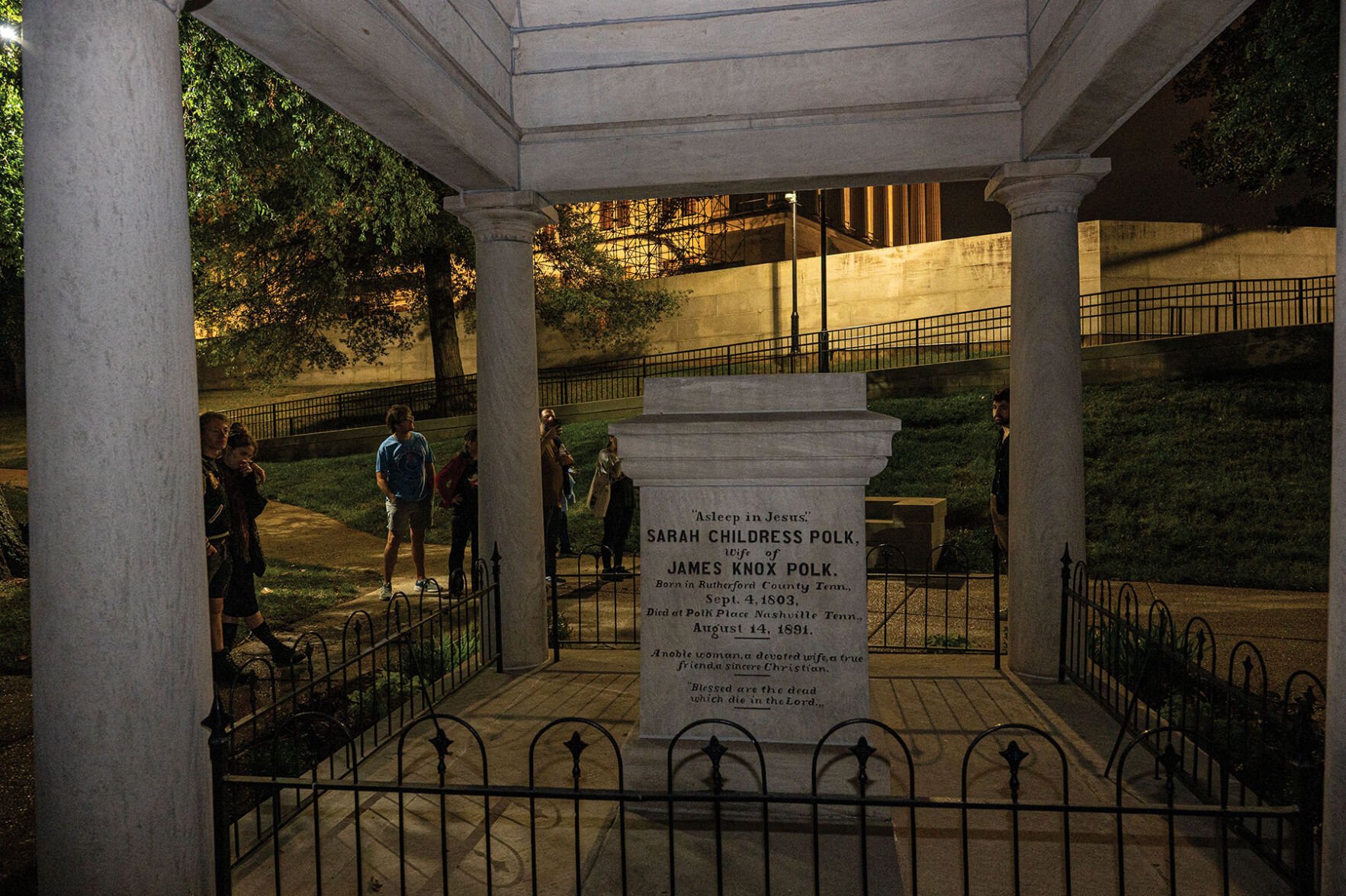You can tell which limestone blocks in the Tennessee State Capitol are original to its 1840s construction. They’re gray with dark wavy striations running lengthwise, contrasting to the light tan color of the newer 1950s stone blocks. A cluster can be found at the northeast exterior corner of the Capitol, one of them engraved with writing.
“William Strickland,” it reads in part. “His remains are deposited within this wall.”
Strickland was the architect of the building, and is one of four people buried on the Capitol grounds — and one of two entombed in its walls.
Jeff Sellers, director of education and community engagement at the Tennessee State Museum, says Strickland not only designed the tomb himself — he “serendipitously” requested permission from state lawmakers to be buried there just six weeks prior to his sudden death. Construction was still ongoing.
Strickland was well-known for his Greek Revival style (Sellers calls him “a household name for American architecture”), but his tomb is more modest than the rest of the Capitol. There’s no cavernous mausoleum behind the wall tempting tomb raiders. Instead, his resting place was carved into the stones, probably no bigger than two feet in any direction.
Tennessee’s is the only state capitol with bodies buried within its walls. The other interred remains belong to Samuel Morgan, a renowned merchant and head of the commission overseeing the Capitol’s construction. Morgan died in 1880 and was buried in the southeast corner of the building.
Naturally, the presence of dead bodies in the Capitol inspires ghost stories. One of the more popular tales says Strickland and Morgan can be heard quarreling in the hallways, their bitter feud lasting into the afterlife. However, even if you believe in ghosts, it’s an unlikely scenario: Sellers says Strickland and Morgan got along quite well.
Outside the building on the east lawn are two more bodies, laid to rest in one tomb: President James K. Polk and his wife Sarah. Although it maybe hasn’t been so restful.
No, that’s not a joke about presidential apparitions (a local ghost tour advertises that Polk’s lonely spirit can be seen lingering near the tomb); the remains have actually been relocated a few times. Polk died of cholera and, in accordance with the laws of the time, was buried in a city cemetery. A year later he was reinterred in a tomb, which was also designed by Strickland, at the Polk estate in downtown Nashville. After Sarah died, there was a fracas over the will, and the Polks were moved to the Capitol — and at one point in the past decade were almost moved to Columbia.
Sellers says he’s a better “history teller” than ghost storyteller, but he understands that the Capitol seems kinda spooky. There are bodies on site, it served as a hospital during the Civil War, and strange noises echo through its cavernous halls at night.
The Capitol may not be haunted by ghosts, but by the more troubling aspects of its history. The construction of the building took place in the antebellum South, and slaves were brought onto the project.
Strickland was from Pennsylvania, a free state, but he didn’t seem to have any issue using slave labor, says Sellers. (Morgan would go on to become a Confederate official, and Polk bought 19 slaves while president.)
Sellers says 15 enslaved laborers worked on the build, along with many more inmates from the state prison. In February of this year, Tennessee lawmakers passed a resolution honoring the enslaved craftsmen. Sellers says the museum is also working to find the names of as many workers who were involved in the construction of the Capitol.
Sellers says the interments of Strickland and Morgan show how much pride they took in the building and demonstrates how much their contemporaries respected them. But he adds that the legacy of the Capitol is not just these “two wealthy white men of the period.” The building reflects the fitful growth of democracy in Tennessee — the amendments expanding voting rights to Black men and to women were ratified in the chambers of the Capitol.
“There’s just all of these generational moments that are important,” says Sellers. “It’s a place where I think Tennesseans should take pride that their political voice is embodied in such a beautiful and historic building.”
Exploring Nashville’s ghost tourism industry, chatting with a historian about the bodies buried in our state Capitol and much more






